Pinnipeds
Fascinating creatures that thwart evolution

Pinnipeds are marine creatures, with front and rear flippers. You’ve probably seen a seal, one of the three groups of living pinnipeds, swimming in the water or lounging around on the sand at the zoo or an aquarium. They are all air-breathing, warm-blooded animals that suckle their young (mammals). Their name is from two Latin words, pinna (wing, fin) and pedis (foot). Their paddle-like feet allow them to swim with agility and ease in the water, and their fat, blubbery bodies keep them warm in their generally cold environment.
More than one-fourth of marine mammals are pinnipeds, with 33 species living today. Pinnipeds are carnivores and are classified into three families.
- Seals belong to the family Phocidae, which is the largest group of pinnipeds. Their water-resistant coat of thin fur helps seals move effortlessly through the water.
- Sea lions, in contrast, have a larger amount of blubber, a thick layer of fat, to keep them warm. Along with fur seals, which are smaller but also have thick fur on their bodies (figure 1), they belong to the family Otaridae. They are also called ‘eared seals’ because they have noticeable outer ears.
- Walruses (Odobenus rosmarus) are unique among all pinnipeds, because they are the only ones with tusks, which are canine teeth in their upper jaw (figure 2). Walruses are the largest pinnipeds, and are the only living species in their family, Odobenidae.1

Food and movement
Pinnipeds eat a wide variety of marine animals, including fish, shrimp, squid, and crabs. The skulls of some seals allow them to eat hard-shelled creatures, such as clams.
Sea lions and fur seals use their arms to swim around in the water, while using their legs as rudders. On land, they move about on all fours.
Seals, on the other hand, use their legs to propel themselves in water, while they direct their movement with their arms. On land they wobble up and down to move around.
Walruses use their hind limbs to move in the water, and move around on land like sea lions and fur seals do.
Many evolutionists believe these three groups split from one ancestral group. But they have problems explaining why they move in such different ways.
Were pinnipeds on Noah’s Ark?
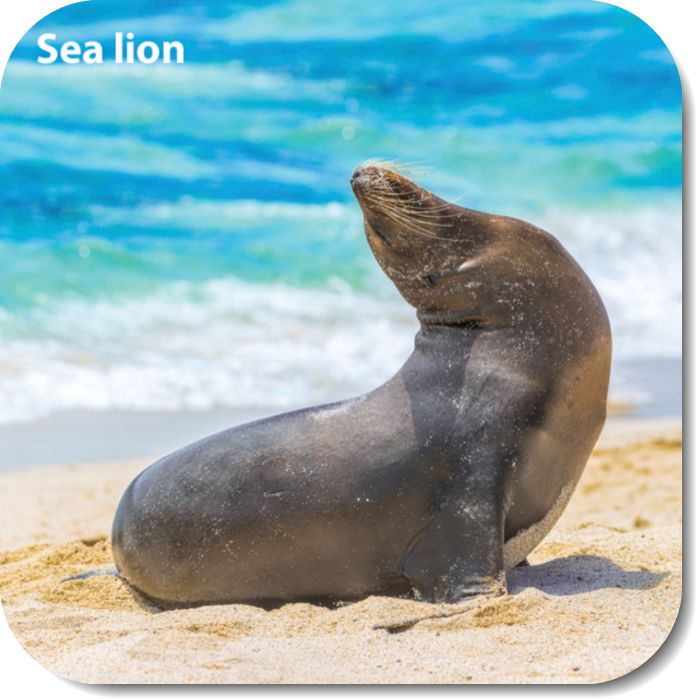

Genesis 7:22 says (emphasis added): “Everything on the dry land in whose nostrils was the breath of life died.” Pinnipeds are semi-aquatic and not generally regarded as ‘dry land’ creatures. So pinnipeds likely survived the Flood outside the Ark, in the water together with other marine animals. This means that unlike many land kinds restricted to diversifying from only one pair on the Ark, they would have had opportunity to diversify within their original kinds ever since Creation Week. Nonetheless, the patterns of diversity suggest there were likely multiple pinniped kinds on Day 5.2
Pinniped non-evolution
Some 13,000 pinniped fossils have been documented, yet evolutionary scientists are still uncertain about their alleged ancestry. According to one view, seals evolved from animals like raccoons and weasels along North America’s Atlantic coast, while sea lions, fur seals, and walruses evolved from bears on the coast of the Northern Pacific.3 Other evolutionists say that, based on their genes, pinnipeds all come from one ancestral group.
They all claim, though, that they came from animals that originally lived exclusively on land. This means that they would have had to undergo some very radical transformations in their anatomy and physiology during the transition to the sea. Pinnipeds are allegedly the last group of land mammals that supposedly became water-dwellers again, the first being the sirenians (manatees, dugongs), then cetaceans (whales, dolphins, porpoises). For land animals to evolve ‘back into the sea’ is so implausible, comparing it to winning the lottery multiple times would be an understatement. Yet it is supposed to have happened over 15 separate times in mammals and reptiles.
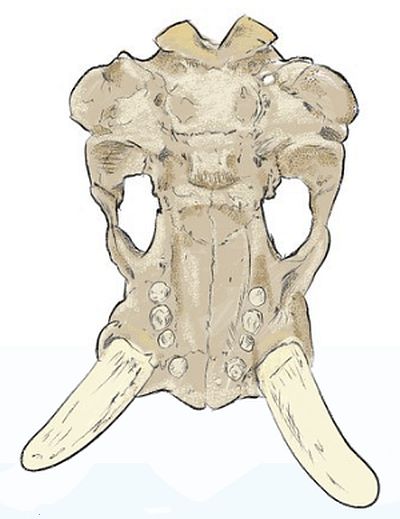
Fossil seals
Evolutionary trees portray many gaps between seals and non-seals. An ‘Oligocene seal’ fossil found near Charleston, South Carolina, is allegedly around 28 million years old, making it the oldest seal according to evolution. But even evolutionists agree that it is a member of the family Phocidae (seals), not its ancestor. Scientists found its fossils in geological layers together with other fully-marine animals, and they believe it could likely swim.4 Based on their bone anatomy, there is nothing resembling a clear line of descent from land animals to seals.
Scientists have also found gut content of the fossil seal Kawa benegasorum. The fossil must have formed very quickly, before the gut content had time to break down, which happens very rapidly from digestive enzymes and acid. This is consistent with quick burial under mineral-laden sediment during Noah’s Flood.
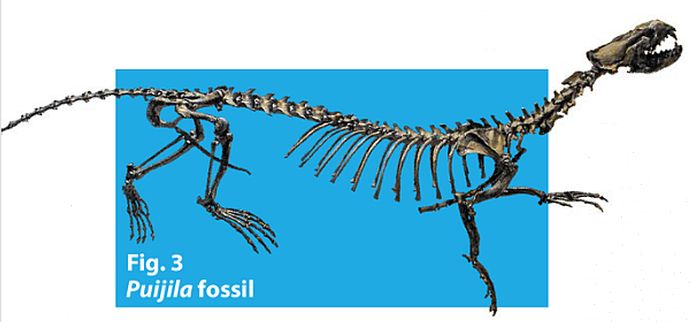
Some fossil walruses vary in size and some species lacked tusks. Some extinct walruses had a lower set of tusks besides their upper ones.5 This is evidence of variety within the walrus kind, not evolution of one kind into another.
Crucially, no convincing transitional fossil species have been found to connect seals with non-seals. One alleged candidate for that role is Puijila (figure 3) found in 2009.6 This fossil is about the same length as a river otter. It has triangle-shaped teeth, like those of an otter, as opposed to the peg-shaped teeth of a seal. It also has four legs and a long tail, like an otter, whereas seals only have very short tails. It is clearly a member of the otter kind, and not a pinniped.
Apart from some wishful thinking, there is a paucity of fossil evidence that non-seals slowly transformed into seals. Monk seals (genus Monachus) are, like several other seal types, considered ‘living fossils’, as they perfectly resemble their fossil forms.7

Pinnipeds have unique traits
Pinnipeds have distinct skull traits compared to all other carnivores. Their teeth are aligned in shorter rows and are all the same shape, known as ‘homodont’ teeth (Gk. homo = same, dont = tooth).8 They do not masticate (chew) their food; they swallow smaller fish whole, but can use their teeth to crush e.g. shells or to tear off pieces of larger prey before swallowing. And, with their different-shaped lenses compared to ours, pinnipeds’ vision is especially suited to their semi-aquatic lifestyle (see box ‘Seal vs human sight in air and water’ p. 31).
How did seals get to inland seas?
Seals live in coastal areas and do not move inland. Interestingly, there are two species of seal which live around large inland bodies of water. The Caspian seal (Pusa caspica), lives on the (saltwater) Caspian Sea in western Asia. The Baikal seal (Pusa sibirica), lives on Russia’s Lake Baikal, the world’s largest body of fresh water by volume. These two seas are very far from the usual seal habitats on oceanic coasts.
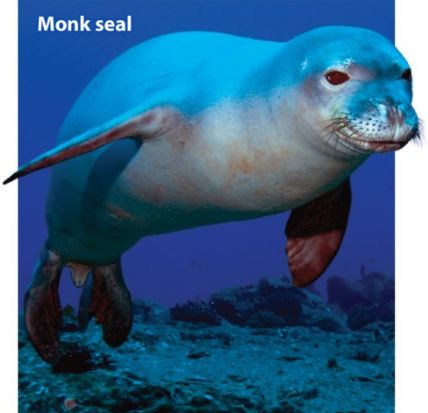
According to one scientist, “a system of large and mutually connected inner basins” may have existed across Asia, including the Caspian Sea and Lake Baikal.9 There could have been large inland seas in central Asia that dried up after the Flood like the ones that exist on other continents. For example, Lake Chad in central Africa and the Great Salt Lake in Utah, USA, are still shrinking.
The Baikal seal is likely closely related to the ringed seal, which lives along the Arctic Circle. The two have similar skulls, suffer from similar parasites, and both build snow dens for their pups. This suggests that the Baikal seal moved south from the Arctic Circle when there was more ice and snow around Lake Baikal, most likely during the post-Flood Ice Age (figure 4). The Caspian seal also likely came from colder northern waters, either the Arctic or the nearer Baltic Sea. However, one genus of fish and one of crustaceans on which the Caspian seal feeds are known from the Arctic Sea, but not the Baltic Sea. Some researchers believe that both the seal and these prey species likely migrated together from the Arctic.10,11 Northern lakes could have been dammed up by the West Siberian ice sheets, causing the fauna to find their way into the Volga River, and from there to the Caspian Sea. Interestingly, fossils of the Caspian seal have been found in the southern Ural Mountains, and of the ringed seal in various locations in Scandinavia and the Baltic Basin.7
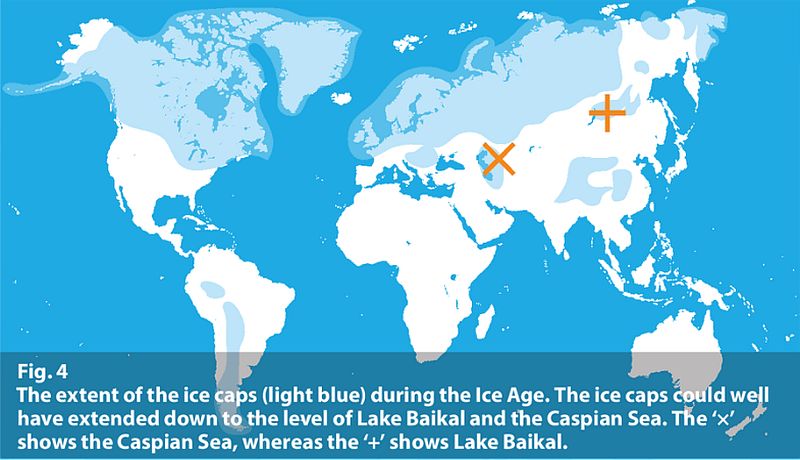
Conclusion
Seals, sea lions and walruses are fascinating creatures. God specially designed them to live in their own watery environment.
All groups of pinnipeds most likely survived the Flood outside the Ark and spread out all over the globe after coastal regions re-emerged. Seals likely reached the deep inland seas in central Asia during the post-Flood Ice Age.
There is no evidence that pinnipeds have come from non-pinnipeds; instead, the evidence from nature supports the Bible as opposed to evolutionary belief. That is, that pinnipeds have only ever varied within the original kinds God created (Genesis 1:21).
Seal vs human sight in air and water
The diagram here shows how in normal human vision in air, light rays are bent in two ‘steps’ to form an image on the retina.
In both seals and humans, the light first bends when it passes from the air through the front of the eye (the cornea), then bends further on passing through the lens. The angle by which light bends (refracts) when passing from one medium (e.g. the air) to another (e.g. the ‘window’ at the front of the eye, the cornea) depends on the degree of difference in the ‘refractive index’ (RI) of each medium. (The greater the ratio of the RI of one to the other, the greater the bending).
Because the RI ratio ‘air/cornea’ is over 30% greater than ‘water/cornea’, when humans try to see underwater the light now bends far less at the cornea. Thus the image would now be ‘focused’ on a point beyond (behind) the retina. This ‘farsightedness’ means our vision is very blurred. Wearing goggles overcomes this by surrounding our eyes with air.

The lens of seals is much more spherical than ours, and thus bends the light much more. So when they are underwater the image falls on the retina as it should. However, in air, extra bending by the cornea means that the image would now be in front of the retina, leading to blurred vision. To compensate for this ‘shortsightedness’, the seal’s pupils narrow to very small slits. This is like us looking through a pinhole: the image will always be clear, i.e. a one-to-one match of points on the object to points on the image.
Underwater, there is less light, especially at depth. So the pupils need to dilate to allow in more light—by up to 400 times for the deep-diving northern elephant seal, Mirounga angustirostris. The proportion of rod cells is higher in the retina of seals compared to that of humans. Rods detect low levels of light (as opposed to cone cells, which sense colour but need bright light). This difference is important in the generally lower light environment underwater.
References and notes
- Berta, A. et al., The origin and evolutionary biology of pinnipeds: Seals, Sea Lions, and Walruses, Annu. Rev. Earth Planet. Sci. 46:203–28, 2018. Return to text.
- Wood, T.C., Animal and plant baramins, in Center for Origins Research Issues in Creation, no. 3, Wipf and Stock Publishers, Eugene, Oregon, pp. 24–27, 2008. Return to text.
- Arnason, U. et al., Pinniped phylogeny and a new hypothesis for their origin and dispersal, Mol. Phylogenet. Evol. 41(2):345–54, 2006. Return to text.
- Koretsky, I., Paleontology of the Late Oligocene Ashley and Chandler Bridge Formations of South Carolina, 1: Paleogene pinniped remains; The oldest known seal (Carnivora: Phocidae), Smithsonian Contrib. Paleobiol. 93:179–183, 2002. Return to text.
- Kohno, N. and Tomida, Y., Summary of the fossil record of pinnipeds of Japan, and comparisons with that from the eastern North Pacific, Island Arc. 3:361–372, 1995. Return to text.
- Batten, D., Another major ‘link’ fails, Creation 35(1):51–53, 2013. Return to text.
- Weston, P., Spectacular, surprising seals, Creation 22(4):28–32, 2000. Return to text.
- Jones, K.E. et al., Impact of the terrestrial-aquatic transition on disparity and rates of evolution in the carnivoran skull, BMC Evol Biol. 15:8, 2015. Return to text.
- Chapski, K.K., Contribution to the problem of the history of the development of the Caspian and Baikal seals, Trudy Zoologicheskovo Instituta Akademiya Nauk SSSR (Proceedings of the Zoological Institute, USSR Academy of Sciences) 47:200–216, 1955. Return to text.
- McLaren, I.A., On the origin of the Caspian and Baikal seals and the paleoclimatological implications, American J. Science 258:47–65, 1960. Return to text.
- Palo, J.U. and Väinölä, R., The enigma of the landlocked Baikal and Caspian seals addressed through phylogeny of phocine mitochondrial sequences, Biol. J. Linnean Soc. 88:61–72, 2006. Return to text.




Readers’ comments
Comments are automatically closed 14 days after publication.